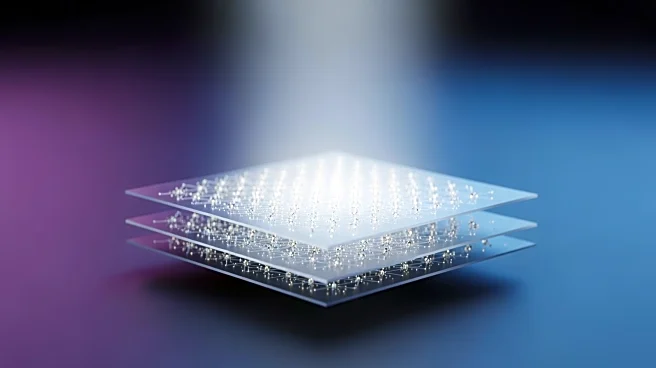What's Happening?
Researchers at the University of Houston have discovered that boron arsenide (BAs) can surpass diamond in heat conductivity, reaching over 2,100 watts per meter per Kelvin at room temperature. This breakthrough
challenges long-held beliefs about heat movement in materials and opens new possibilities for high thermal conductivity and semiconductor-like transparency. The study involved reducing crystal impurities and optimizing synthesis methods to achieve nearly perfect crystalline structures, confirming theoretical predictions about BAs's potential.
Why It's Important?
The discovery of boron arsenide's superior heat conductivity has significant implications for the electronics industry. It offers a new material that can efficiently dissipate heat while maintaining electrical conductivity, potentially enhancing the performance of high-power computers, smartphones, and data centers. This advancement could lead to more efficient and compact electronic devices, driving innovation and competitiveness in the tech sector. The ability to fabricate BAs more easily than diamond further supports its potential for widespread adoption.
What's Next?
The research team plans to continue improving BAs synthesis and reviewing advanced material models. As the electronics industry explores the use of BAs, stakeholders will monitor its integration into existing technologies and potential impacts on device performance and manufacturing processes.
Beyond the Headlines
The development of boron arsenide highlights the importance of material science in driving technological progress. It raises questions about the future of semiconductor materials and the role of research in overcoming limitations of traditional materials like diamond.












